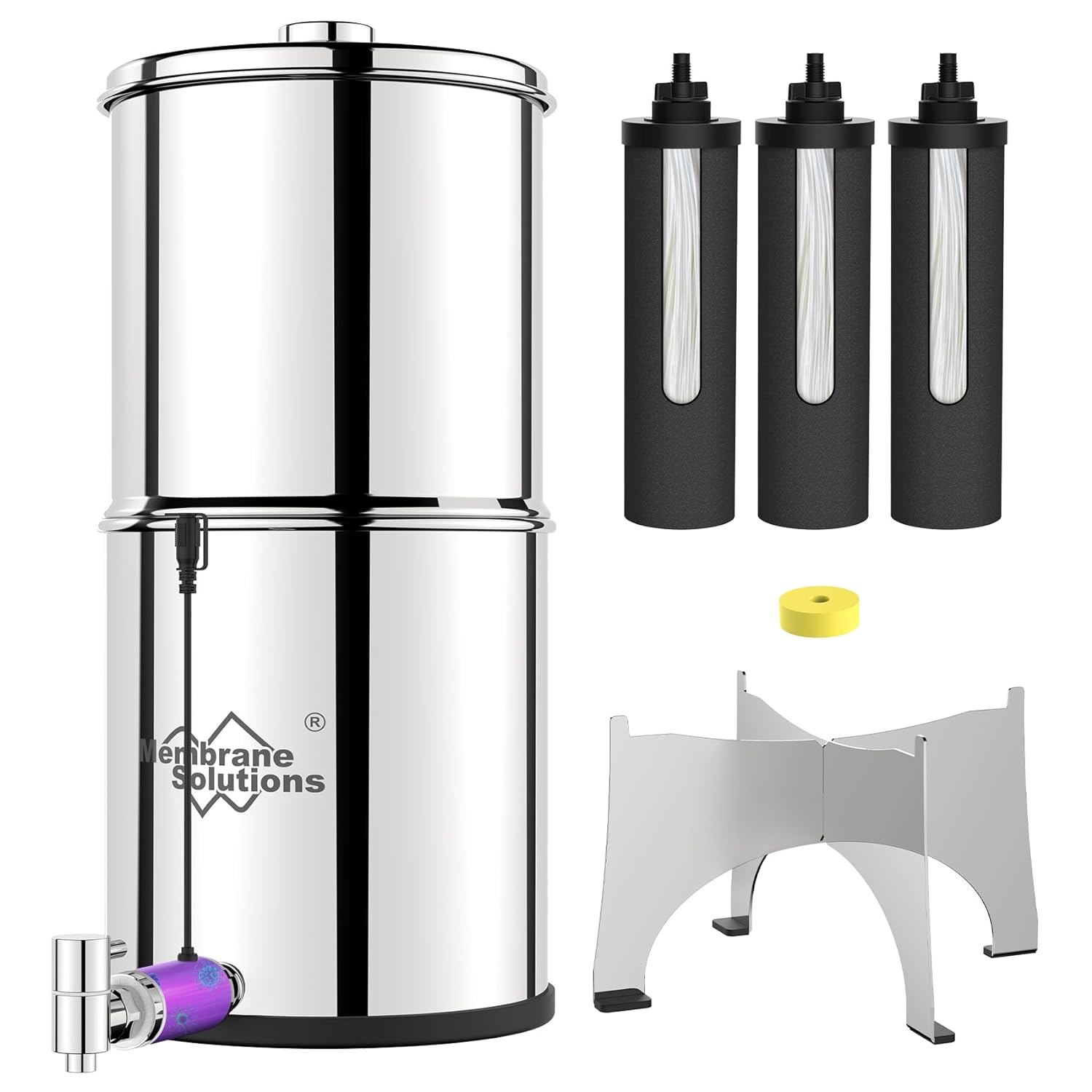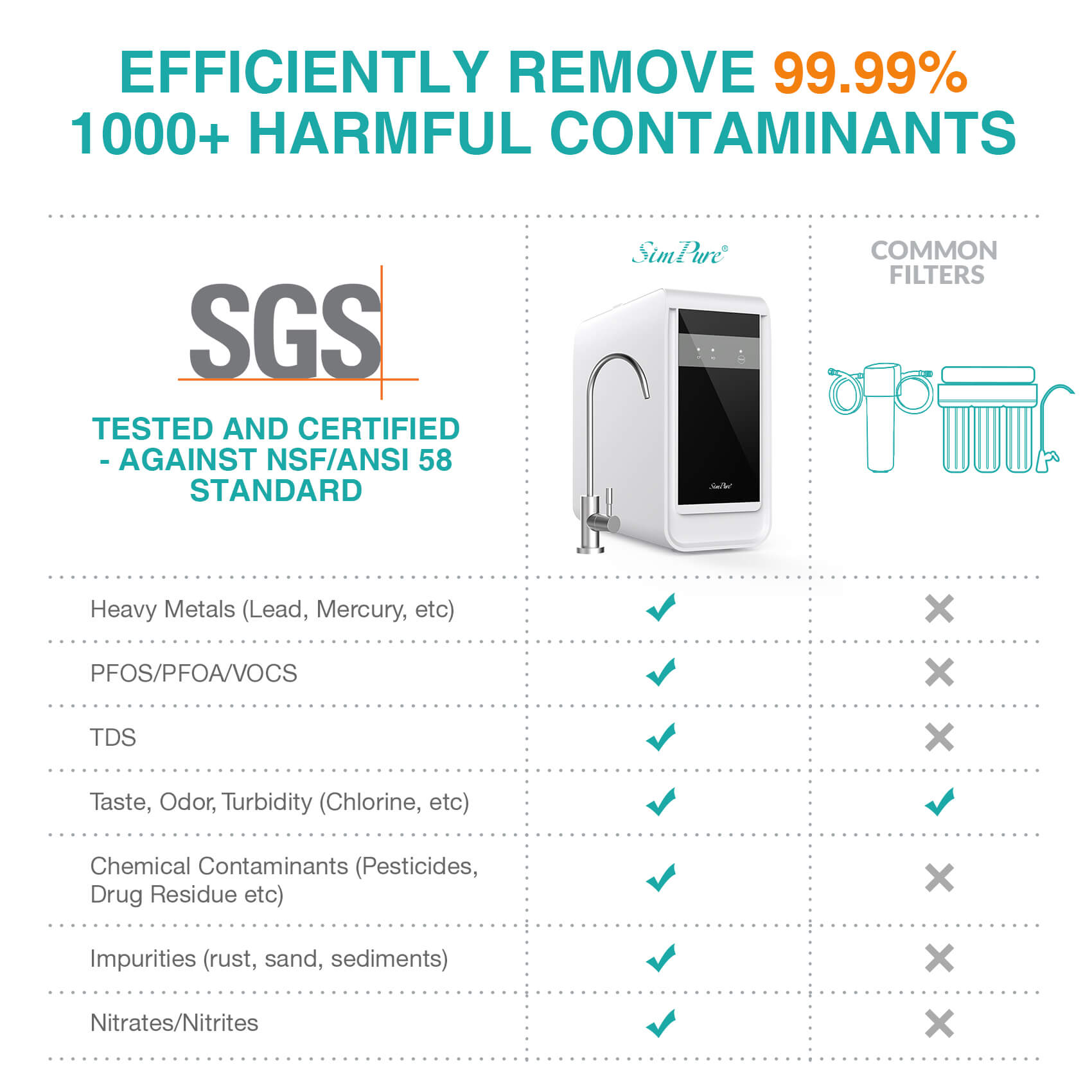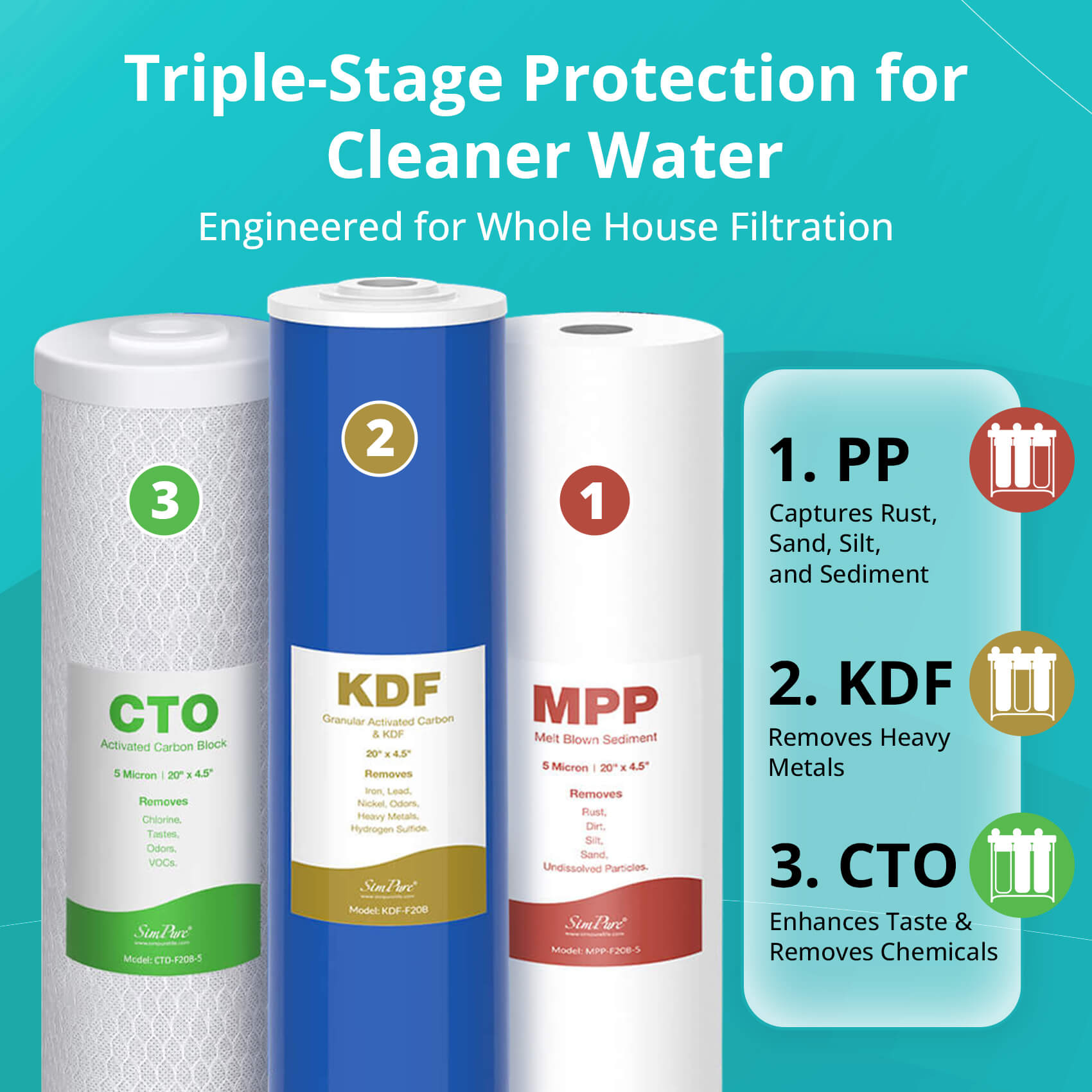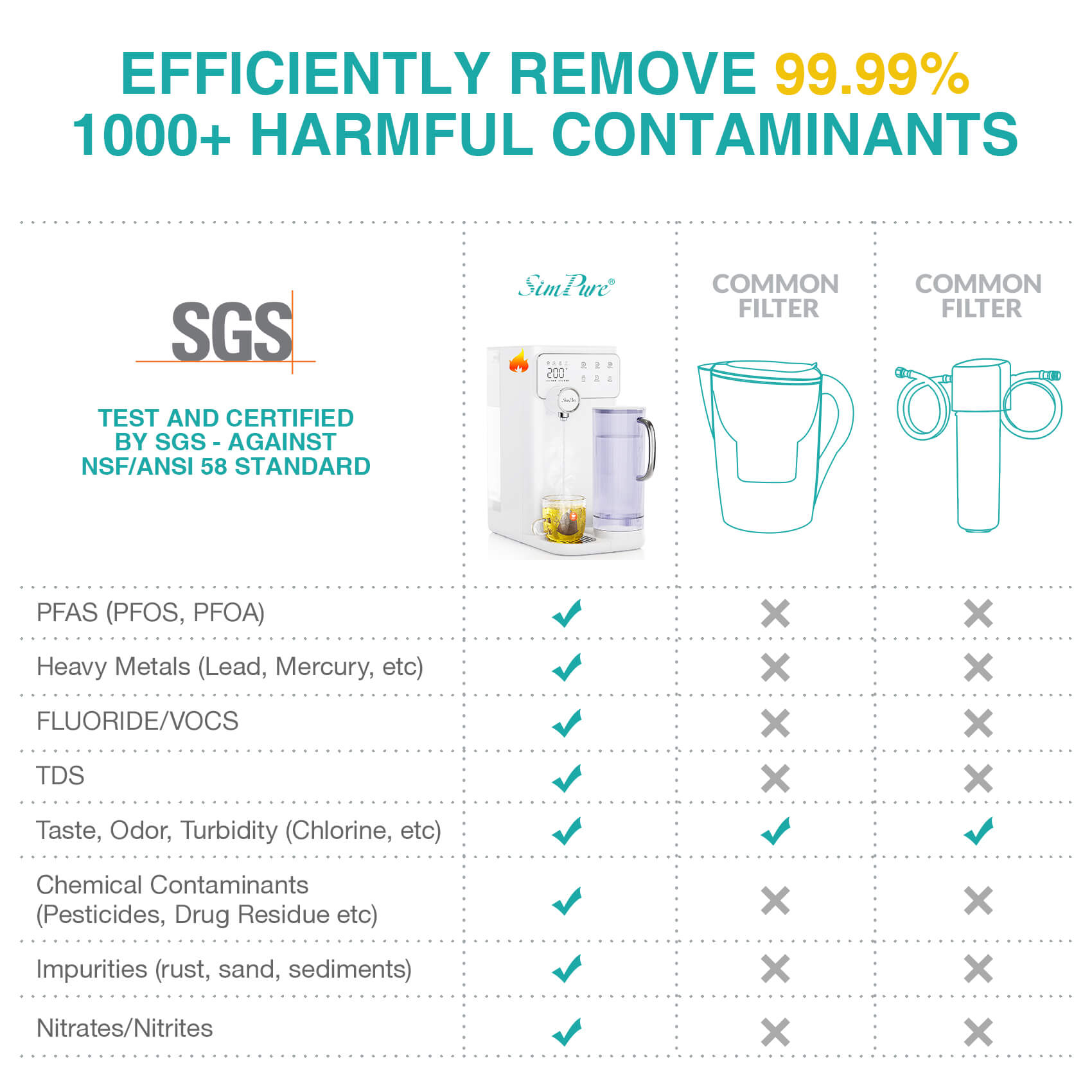Do you often face the issue of brown muddy stains all over your place, especially on your toilet, faucet, or sinks? The culprit could be iron. High concentrations of iron in water can lead to stains that not only ruin the aesthetics of your home but also contaminate water. Drinking or using such water is injurious to your health and may lead to several health problems.
Hence, it is important to get rid of iron on a priority basis. So, if you are wondering how to filter iron out of well water, you’re at the right place as we have mentioned all the techniques and tips to effectively filter iron out of well water in this comprehensive guide.
Why There is Iron in Well Water?
There are multiple reasons behind the presence of iron in water. As rain falls and snow melts, water can seep through iron-enriched soil or rock, making iron dissolve in water, and find its way into well water. Sometimes, high iron content in water also results from corrosion.

Similar to how iron turns to rust in a metal bucket when exposed to water or oxygen, iron content in water also turns to rust and stains plumbing lines and toilets. If your well is made up of iron, then water may corrode the walls, oxidize the iron, and form rust. This is how rusty water travels through your plumbing lines and affects your taps and faucets.
Types of Iron in Well Water
Before learning how to filter iron out of well water, it’s important to learn about the various types of iron in water. Iron usually appears in three forms.
- Ferric Iron
Ferric iron appears in a beautiful orangish-red color and is usually clear well water exposed to oxygen, oxidized to form rust, giving a reddish color to water. Water containing ferric iron comes out in shades of yellow or red from the faucet.
- Ferrous Iron
Ferrous iron is usually invisible and cannot be seen in water as it is soluble and readily dissolved in water. This type of iron usually comes from other water sources. Also, water having ferrous iron comes out clear but turns reddish-brown after standing for a while.
- Organic Iron
This type of iron is mostly colorless but can be yellow or brown. Shallow wells usually contain water comprising organic iron.
Common Problems Caused by Iron in Well Water
If you want to filter out iron from well water, you should do it immediately as the presence of high amounts of iron in water is risky and leads to the following problems.
-
The abundance of iron in water can harm skin cells, leading to wrinkles and skin infections. Water high in iron doesn’t thoroughly remove soap from the skin, leading to clogged skin pores and excess oil buildup on the skin, potentially leading to acne.
-
High amounts of iron in water are a breeding ground for bacteria which may lead to health problems, including diabetes, nausea, or stomach problems.
-
Excessive iron in water leads to a strong metallic taste which may hinder food or drinks. It also spoils flavor and darkens fruits and vegetables.
-
Iron leaves reddish-brownish stains on your plumbing fixtures and if you wash utensils with iron rich water, it may leave stains on your cutlery. Moreover, it also fades your clothes.
-
Additionally, excess iron in water may cause clogged pipes, leading to low pressure in bathrooms. It may also corrode your pipes and lead to water seepage.
How to Test Iron in Well Water?
If you are looking for ways on how to filter iron out of well water, there are multiple things you can do. For starters, you can perform a water quality test, as this helps you determine levels of iron in water and whether it is safe for usage or not. You may do so by performing an in-home iron water test. You can also consult the professionals to do the testing for you and check if your water has the recommended iron levels below 0.3mg/L. If you find that the iron content in your water is higher than this limit, you may need to invest in an iron filtration system to filter out iron in water. You may refer to
With these water tests, you can also learn whether the water in your home contains other contaminants, such as high levels of chlorine, total dissolved solids (TDS) or water hardness.
Methods to Filter Out Iron from Well Water
If you want to get iron out of drinking water, you need to utilize various iron filtration methods designed to provide you with clean and clear water. Here are a few ways through which you can filter out iron in water.
-
Sediment Filters
Sediment filters are an economical method for removing different sorts of contaminants in water such as iron, calcium, rust, sand, or debris. These filters are perfect for pre-water treatment and can get rid of dissolved solids and particles from water. Consider the SimPure DC5P spin-down sediment filter, a flushable and reusable well water filter which ensures safe and clean water. The 200μm filter provides enhanced filtration and is ideal for municipal or city water.
-
Reverse Osmosis Systems
Another popular method of filtering out iron in well water is via reverse osmosis system. In this method, water is pushed through a semipermeable membrane forcefully. The membrane has small pores which blocks contaminants such as iron and lets clean water pass through. It’s an ideal iron filtration method and is a top choice among homeowners since it can be placed under the sink. SimPure reverse osmosis filtration systems feature advanced filtration technology and can remove almost all sorts of water contaminants.
-
Water Softeners
The best method to filter ferrous iron from water is via water softeners. These are mostly used to remove water hardness-causing minerals (such as calcium and magnesium) through ion exchange, a process where sodium ions are exchanged with mineral ions present on resin beads. However, if your water has soluble iron, water softeners may not be ideal in this case. A sediment filter may be more suitable in that scenario.
-
Oxidation Filtration Systems
The oxidation filtration system works by oxidizing ferrous iron in the water into particulate matter which is easily filtered out. The oxidants used in this process are generally oxygen, hydrogen peroxide or chlorine. In chlorine-based filtration, chlorine solution is injected into the water where ferrous iron ions are oxidized into colloids which are then easily removed by the filters. In hydrogen peroxide oxidation, liquid hydrogen peroxide solution is injected into the water where it fully interacts with iron, eliminating it in the process.
-
Whole House Iron Filters
If you wonder how to filter iron out of well water using advanced technology, then consider whole-house iron filters, such as the Greensand and Birm filters. Manganese greensand is a powerful oxidizer which converts ferrous iron into ferric iron to remove it from water. When manganese and iron interact, they are oxidized and converted into a solid particulate matter which is easily filtered out of the water. Manganese greensand can remove up to 15 ppm of iron out of well water.
Another method similar to greensand is Birm filters. These filters do not use an oxidizing agent unlike greensand, to remove iron from water. However, Birm filters work well with water with high pH levels so calcite is mostly used to elevate water pH levels and this allows Birm media to effectively oxidize iron and eliminate it from water.
Conclusion
If you taste a strong metallic taste or spot reddish-brown water stains on your plumbing fixtures, then it is time to test your water as it most probably is high in iron. Excess iron is injurious to health so it is important to address it and take necessary measures to eliminate it. There are multiple iron filtration systems available on the market these days so you can choose the one that aligns with your budget and preferences. You may also consult a professional to see which filter will work best to eliminate ferric or ferrous iron from your well water.
Explore SimPure Best Solution!


























